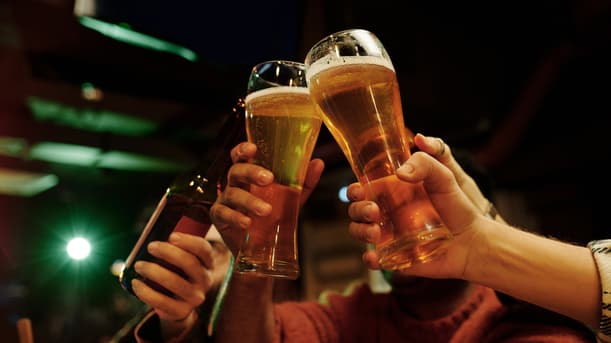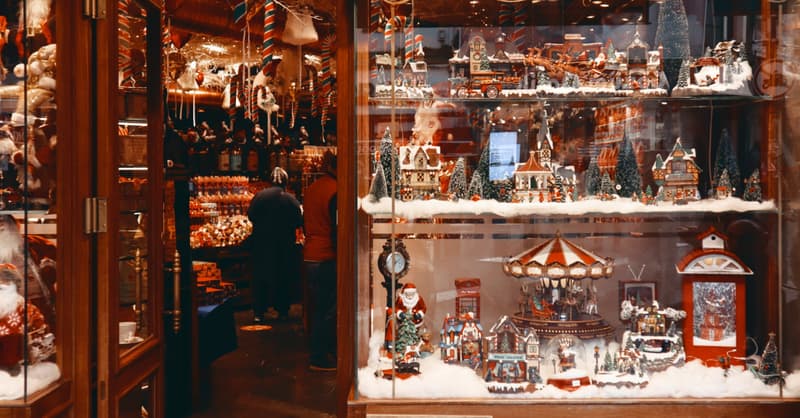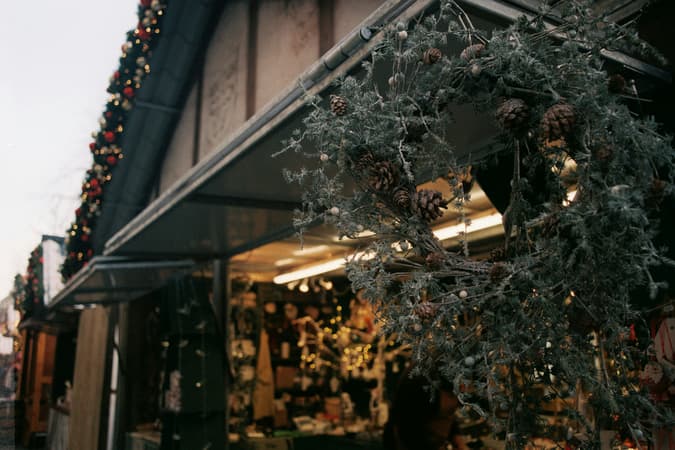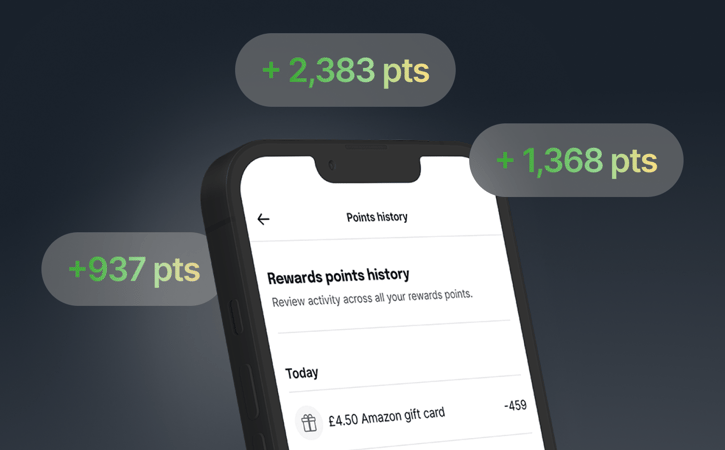Jump to a section
Rising costs, changing social habits, and tougher regulations are pushing UK nightlife spots to the edge. This decline is not just a loss for partygoers - it’s a hit to local businesses and the economy too. The disappearance of venues is increasingly impacting local economies and culture, making it more important than ever to find the spots that are still thriving.
At Capital on Tap, we’ve analysed the nightlife landscape across the UK to uncover the best areas for a night out. We've also looked at the areas with the biggest demand for nightlife businesses, as well as predicting the state of nightlife in 2030 if current trends continue.
A closer look at the UK's hotspots for nightlife
Whether it’s for a celebratory night out, a birthday bash, or simply enjoying an evening with friends, people across the UK are seeking out the best nightlife spots for unforgettable experiences. But which cities offer the most vibrant nightlife scenes?
|
Rank |
City |
Total number of clubs |
Total number of clubs per 10,000 people |
Total number of pubs and bars |
Total number of pubs and bars per 10,000 people |
The average rating of nightlife (out of 5) |
|
1 |
Brighton |
20 |
1.4 |
190 |
13.7 |
4.4 |
|
2 |
Bath |
15 |
1.6 |
60 |
6.3 |
4.3 |
|
3 |
Bristol |
60 |
1.0 |
260 |
4.2 |
4.4 |
|
4 |
Norwich |
10 |
0.5 |
105 |
4.9 |
4.4 |
|
5 |
York |
25 |
1.6 |
110 |
7.2 |
4.3 |
|
6 |
Exeter |
10 |
0.8 |
40 |
3.4 |
4.4 |
|
7 |
Leeds |
65 |
1.4 |
180 |
4.0 |
4.3 |
|
8 |
Newcastle |
40 |
2.1 |
125 |
6.5 |
4.3 |
|
9 |
Edinburgh |
25 |
0.5 |
245 |
5.3 |
4.3 |
|
10 |
Belfast |
65 |
2.4 |
105 |
3.8 |
4.3 |
Brighton
Our research found that the best location for a night out in the UK is Brighton, located on the south coast of England. With 20 clubs and almost 14 pubs and bars per 10,000 people, it offers a variety of options.
Known for its LGBTQ+ friendly venues, live music scene, and eclectic mix of bars and clubs, Brighton attracts a diverse crowd, earning average ratings of 4.4 for pubs, bars, and clubs. While cities like London, with its own major tourist draw, should naturally have a bustling nightlife, Brighton stands out with its buzzing seaside location, keeping the city’s nightlife busy all year round.
Bath
With a total of 15 clubs and just over six pubs and bars per 10,000 people, Bath’s thriving nightlife scene is bolstered by popular spots like The Bell, Komedia, and The Saracens Head. The city’s high customer satisfaction, reflected in average venue ratings of 4.3 out of five, speaks to its vibrant appeal.
Bath’s picturesque setting, steady flow of tourists and students, and compact size create a lively, community-driven atmosphere, making it easy to hop between a diverse range of venues.
Bristol
In third place is Bristol, a vibrant city in the South West known for its creative energy and eclectic charm. With a total of 60 clubs and 260 pubs and bars, Bristol offers one of the most extensive nightlife scenes on this list. Although its club, pub, and bar density per 10,000 people is slightly lower than some competitors, the city still shines with an impressive average nightlife rating of 4.4.
Whether you're after underground clubs showcasing cutting-edge music or cosy pubs full of character, Bristol’s nightlife caters to every taste and style.
The UK cities losing their nightlife scene
Nightlife has long been a cornerstone of social life in the UK, but in some areas, the once-thriving scene is starting to fade. As UK nightlife faces uncertainty, which regions are experiencing the biggest loss?
|
Rank |
City |
Total number of clubs |
Total number of clubs per 10,000 |
Total number of pubs and bars |
Total number of pubs and bars per 10,000 |
% Change in the number of clubs, pubs and bars (2022 to 2024) |
|
1 |
Leicester |
35 |
0.7 |
100 |
2.0 |
-12.49% |
|
2 |
Hull |
15 |
0.5 |
125 |
4.0 |
-11.75% |
|
3 |
London |
480 |
0.6 |
2,215 |
2.9 |
-11.78% |
|
4 |
Birmingham |
80 |
0.8 |
220 |
2.2 |
-11.70% |
|
5 |
Nottingham |
30 |
0.4 |
125 |
1.7 |
-9.58% |
|
6 |
Stoke-on-Trent |
20 |
0.5 |
120 |
3.2 |
-10.27% |
|
7 |
Reading |
15 |
0.5 |
40 |
1.3 |
-8.62% |
|
8 |
Cardiff |
35 |
0.8 |
95 |
2.1 |
-9.58% |
|
9 |
Coventry |
35 |
1.0 |
90 |
2.5 |
-10.33% |
|
10 |
Liverpool |
45 |
0.5 |
285 |
3.3 |
-8.42% |
Leicester
Once a thriving hub for students and weekend partiers, Leicester tops the list for the city with the biggest declining nightlife in the UK, offering just 0.7 clubs per 10,000 people and 2 pubs and bars per 10,000.
Leicester’s nightlife hotspots, such as the Cultural Quarter and Braunstone Gate, have seen a noticeable downturn in recent years. With a 12.49% decline in nightlife venues between 2022 and 2024, the city reflects a broader trend of nightlife disappearing, as even larger urban areas struggle to sustain their once-thriving late-night economies.
Hull
The North of England has been known for its bustling nightlife, but in recent years, venues have rapidly declined. Hull comes in second place, offering only 15 clubs in total, or 0.5 clubs, and only four pubs and bars, for every 10,000 people.
Once home to a more vibrant nightlife, Hull's Old Town and Waterfront areas are now struggling to keep their venues open. With an 11.75% decline between 2022 and 2024, the city’s nightlife scene is slowly fading, highlighting the challenges even smaller cities face in keeping their nightlife alive.
London
Closing the top three of the fading nightlife hotspots is London, offering 0.6 clubs and 2.9 pubs and bars per 10,000 people. The UK capital has experienced a sharp 11.78% decline in nightlife from 2022 to 2024.
This decline highlights the ongoing challenges London faces in maintaining its once-renowned nightlife scene amidst changing trends and rising costs.
The places with the highest demand in the UK
As nightlife fades in some UK cities, it’s becoming increasingly difficult to find the perfect spot for a night out, revealing a growing appetite for a revival in certain areas.
To explore where the demand remains high, we’ve analysed UK nightlife search trends and the percentage change in club and pub numbers over the past three years. These insights highlight the areas with the most demand for nightlife:
|
Rank |
City |
% Change in the number of clubs, pubs, and bars ( 2022 to 2024) |
Nightlife monthly search volume |
Nightlife monthly search volume per 10,000 |
|
1 |
Manchester |
-7.39% |
63,810 |
1,613.3 |
|
2 |
Edinburgh |
-8.38% |
60,510 |
1,301.3 |
|
3 |
Brighton |
-9.85% |
20,090 |
1,445.3 |
|
4 |
London |
-11.78% |
1,231,610 |
1,629.8 |
|
5 |
Bristol |
-8.61% |
52,010 |
842.6 |
|
6 |
Southampton |
-5.28% |
6,030 |
244.9 |
|
7 |
Leeds |
-8.91% |
27,210 |
597.9 |
|
8 |
Glasgow |
-10.08% |
38,610 |
652.6 |
|
9 |
Sheffield |
-7.83% |
16,990 |
247.9 |
|
10 |
Reading |
-8.62% |
9,730 |
306.0 |
Manchester
Manchester ranks first among the cities with the highest demand for nightlife. With 7.39% of venues disappearing, the city still sees strong demand, with 1,613 monthly searches per 10,000 people, making it an ideal location for an entertaining escape.
Renowned for its music scene, youthful vibe, and diverse crowd, Manchester provides a lively atmosphere for night owls, with its constantly evolving nightlife continuing to attract a vibrant demand.
Edinburgh
Edinburgh comes in second, with 1,301 monthly searches per 10,000 people and an 8.38% decline from 2022 to 2024. Known for its rich cultural scene and a steady flow of tourists, the city offers strong potential for nightlife seekers.
Edinburgh's unique blend of locals and visitors presents a promising landscape for those looking for fun and late drinks.
Brighton
Not only is Brighton the best destination for nightlife in the UK, but it also ranks third for nightlife demand, with 1,445 monthly nightlife-related searches per 10,000 people. Despite a 9.85% decline in venues since 2022, this high level of interest suggests that supply and demand remain well-matched. While the city has experienced a dip in clubs, pubs, and bars, the city’s night-time culture remains strong, highlighting Brighton’s continued appeal as a vibrant coastal destination.
What’s next for UK nightlife in the coming five years?
The future of UK nightlife stands at a crossroads, with the ongoing decline in venue numbers leading to an uncertain scenario in the coming years.
To better understand what lies ahead, we’ve developed a formula to forecast the state of pubs and clubs in each city by 2030. We used the number of pubs, clubs and bars in each city as of 2024 as a baseline, then applied quarterly decline rates to project the number of active venues each subsequent year. These decline rates were calculated from recent historical trends dating back from 2022 up to 2024, allowing us to forecast the number of venues across the UK by 2030 should these trends continue.
|
Rank |
City |
Total number of clubs, pubs, and bars in 2024 |
Total number of pubs and clubs 2030 |
Predicted % change of pubs and clubs from 2024 up to 2030 |
|
1 |
Leeds |
245 |
75 |
-69.39% |
|
2 |
Hull |
140 |
43 |
-68.94% |
|
3 |
Brighton |
210 |
73 |
-65.00% |
|
4 |
Liverpool |
330 |
130 |
-60.64% |
|
5 |
Newcastle |
165 |
66 |
-59.86% |
|
6 |
Leicester |
135 |
58 |
-57.20% |
|
7 |
Sheffield |
265 |
117 |
-55.95% |
|
8 |
Coventry |
125 |
55 |
-55.78% |
|
9 |
Portsmouth |
125 |
56 |
-55.30% |
|
10 |
Northampton |
95 |
44 |
-53.87% |
Leeds is set to see the steepest decline in nightlife in the UK, with a predicted 69.39% drop in the number of pubs, clubs and bars since 2024 if the current trend persists and no changes are made. The city will see its venues decrease from 245 in 2024 to just 75 by 2030, highlighting the challenges faced in this city.
Similarly, Hull is set to lose 68.94% of its nightlife, from 140 venues to 43, as rising costs and shifting trends hit its bustling scene.
Brighton also isn’t spared, with a predicted 65% decrease from 210 venues to 73 by 2030. Despite its reputation as a cultural hub, even cities with thriving nightlife like Brighton are feeling the squeeze from economic pressures and changing consumer habits.
This decline across the UK shows that nightlife everywhere is facing tough challenges. Our research shows that, across all locations analysed, the UK can expect an average 49.31% decline in nightlife businesses. However, as shown by Brighton’s success, some destinations can still thrive when the balance of supply and demand is right.
Drawing on our predictions for the next five years, Kamilla Fernandes-Pickett at Capital on Tap has shared actionable advice on launching a successful nightlife business, helping entrepreneurs navigate current challenges while capitalising on emerging opportunities and trends.
Focus on local demand and trends
To successfully launch a nightlife business, it’s essential to understand local demand and trends. Analyse the top nightlife hotspots in the UK, such as areas with high footfall, proximity to universities, and a steady stream of tourists.
Kamila Fernandes-Pickett from Capital on Tap commented, "Understanding what locals and visitors are seeking—whether it’s cosy pubs, vibrant clubs, or relaxed bars- will help tailor your business to meet their preferences. Stay ahead of the curve by keeping an eye on emerging social trends, such as pop-up events, alcohol-free nights, or lively dining experiences, to ensure your venue remains a popular choice”.
Adapt to shifting consumer habits
The nightlife landscape is evolving, with tastes changing by generation.
Kamila adds, "Consider live performances, themed nights, or interactive events that attract those seeking more than just dancing.
“Understanding consumer preferences in your target market, whether it’s through music genres, food offerings, or cocktails, can be a game-changer in building a loyal customer base”.
Leverage digital social media
In a rapidly changing nightlife environment, online marketing and social media are invaluable tools for success. Build an active online presence to engage with your target audience, share event promotions, and showcase the atmosphere of your venue.
Kamilla from Capital on Tap adds, "Strong social media strategy can boost brand recognition, and platforms like Instagram and TikTok are essential for attracting younger crowds who prioritise social sharing. Implementing a seamless booking system and virtual tours can also enhance customer convenience".
Use the right business card for smooth operations
To streamline your finances and keep your business running smoothly, using the right business credit card is essential.
"A business card can help you manage expenses, separate personal and business finances, and build credit. Capital on Tap offers business credit cards that come with great benefits, making it easier to track spending and access funds when needed. For more details on how the right business card can support your nightlife business, check out Capital on Tap’s business credit cards".
Prepare for uncertainty with flexibility
The nightlife industry is facing numerous challenges, from changing regulations to the impact of the pandemic. Building flexibility into your business model is crucial for navigating uncertain times.
Kamilla summarises, "Keep your offerings adaptable to meet changing customer expectations and legal requirements, such as capacity limits or other regulatory changes. Having a contingency plan for financial hardships or market changes can help your business remain resilient and sustainable, no matter what the future holds".
Methodology and sources
To find out the best locations for nightlife in the UK, we ranked the most populated UK cities based on the following factors:
-
Nomis Official Census and Labour Market Statistic - Number of clubs (per 100,000 people)
-
Nomis Official Census and Labour Market Statistic - Number of pubs and bars (per 100,000 people)
-
Google Business - Average rating for pub/bar/club
To identify which areas have had the biggest fall in nightlife, we analysed each city using the following metrics:
-
Nomis Official Census and Labour Market Statistic - Total number of clubs
-
Nomis Official Census and Labour Market Statistic - Total number of pubs and bars
-
Google Business - Average rating for pub/bar/club
-
NTIA / CGA by NIQ Night Time Economy Market Tracker Report - Actual % venue closures from 2022 to 2024
To rank the locations with the biggest demand, we analysed:
-
NTIA / CGA by NIQ Night Time Economy Market Tracker Report - Actual % venue closures from 2022 to 2024
-
Google Keyword Planner - Search volume for nightlife
To predict the % change between 2024 and 2030, a formula was created based on the quarterly nightlife decline rates from the previous two years (from March 2022 to December 2023) to determine the rate of pubs and clubs declining/increasing in each city from 2024 to 2030.











